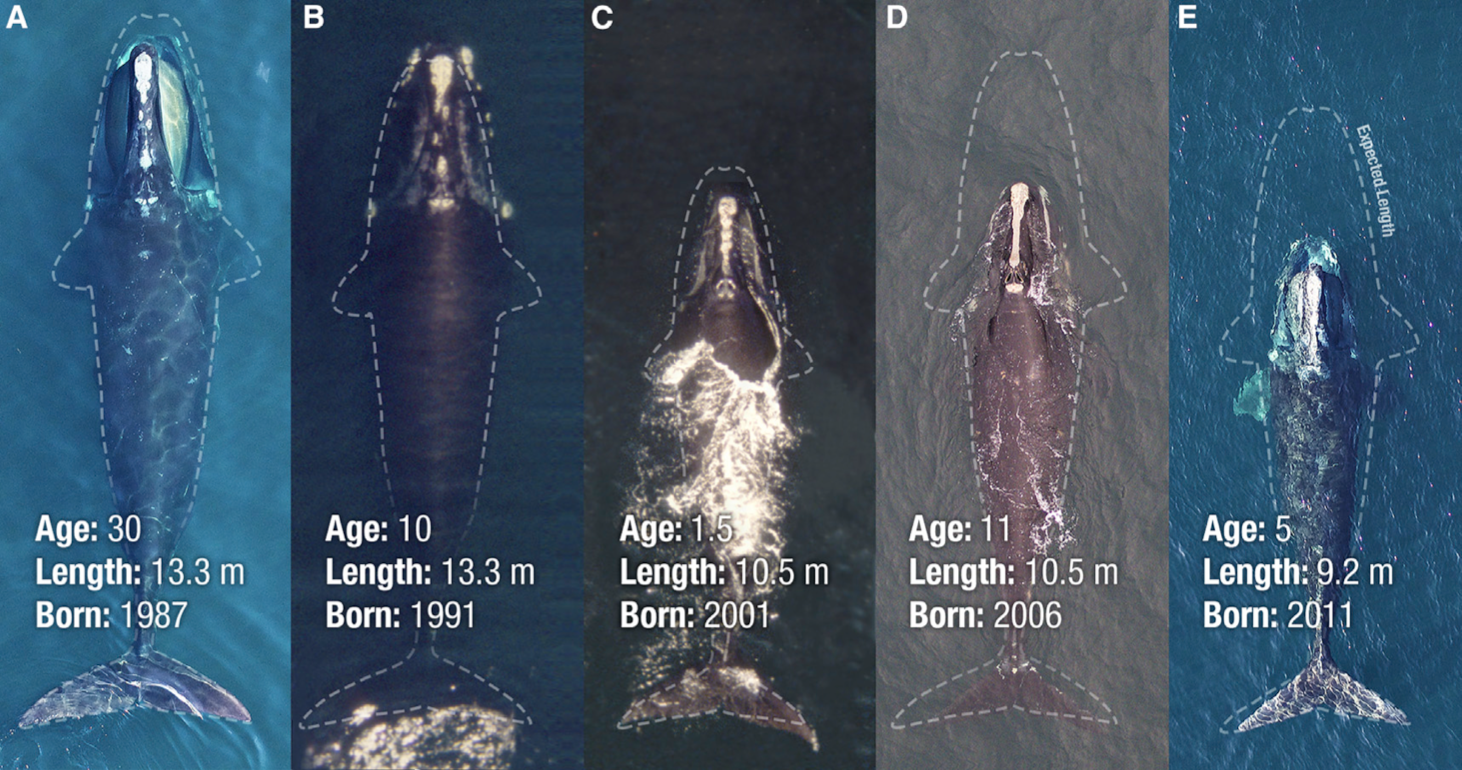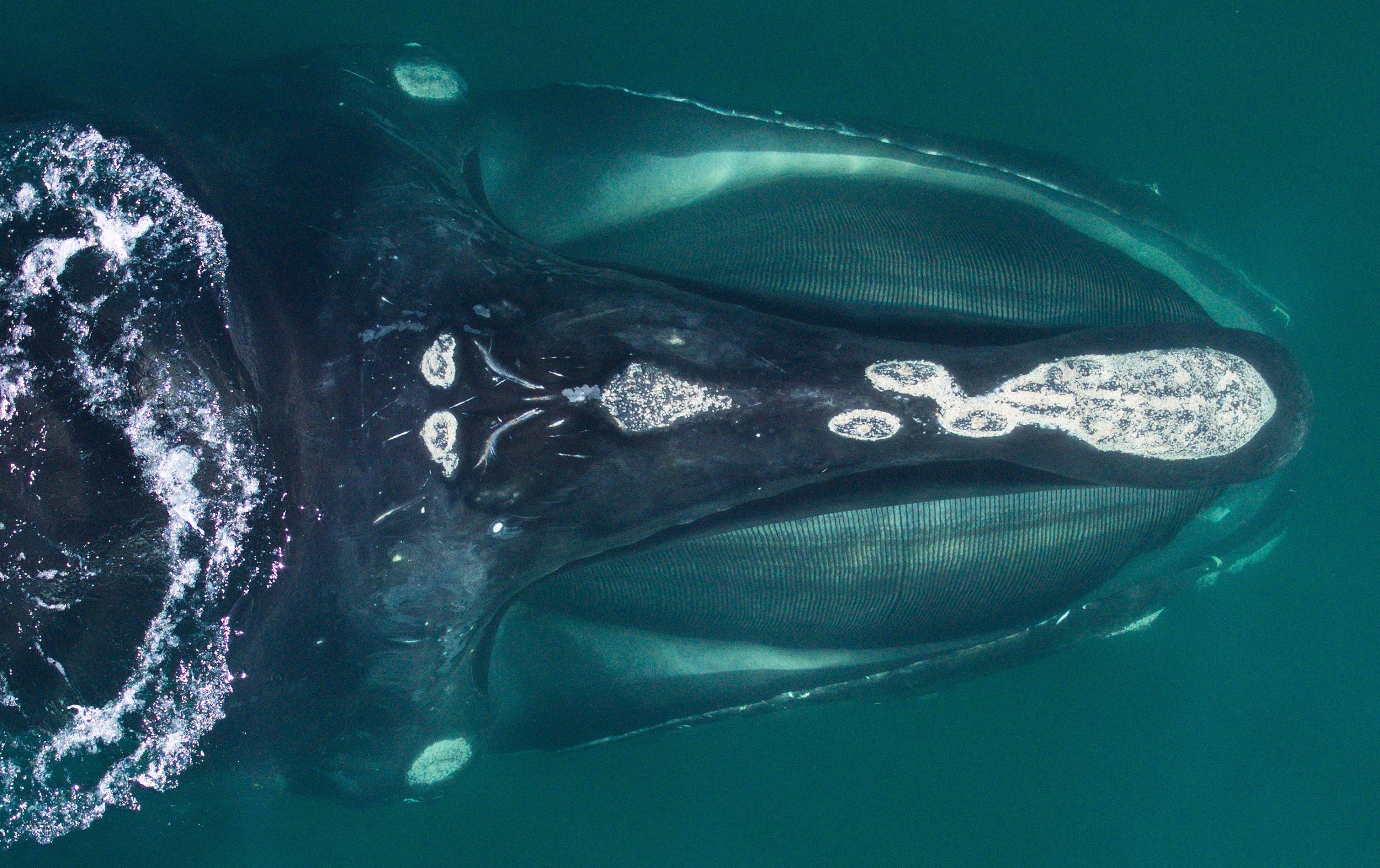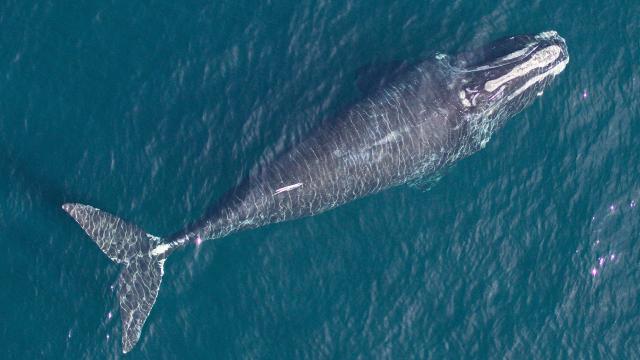Whales are some of the biggest animals on the planet, but new research shows that at least one endangered species is shrinking.
The study, published in the journal Current Biology on Thursday, examines changes in the length of North Atlantic right whales’ bodies over the past several decades. The findings indicate that fishing gear entanglements are playing a major role in the sad story of the shrinking whales — but climate change and other factors could be contributors as well.
North Atlantic right whales are a species of baleen whales found primarily in Atlantic coastal waters. They’re “one of the world’s most endangered large whale species,” according to the National Oceanic and Atmospheric Administration. Among the threats are are ocean warming, being hit by ships, getting caught in fishing gear, and marine noise pollution from travel and industry. Only an estimated 400 North Atlantic right whales remain and their population has been dwindling since 2011. So, too, has the length of those whales that continue to survive.
To track how the right whales’ measurements have changed over time, the authors — who hail from NOAA, the New England Aquarium, Woods Hole Oceanographic Institution, and Oregon State University — looked at images of the creatures collected by research aircraft and remotely operated drones between 1981 and 2019. In total, the authors obtained a total of 202 length measurements of 129 individual whales.
“Using image pixel counts of whale length in flat photographs at a known altitude, one can measure whale lengths,” Michael Moore, director of the Woods Hole Oceanographic Institution’s Marine Mammal Centre and study co-author, wrote in an email.
The team used only photos of whales for which they knew the birth year. They had only one photo of most of the whales, but for some of, they had multiple images from separate years.

The authors focused on length and birth year to see how much whales’ growth had changed over time. The scientists used a methodology known as the Gompertz growth equation, which allowed them to account for how whales grow over the course of their lives.
The changes the authors tracked were staggering. A whale born in 2019, they found, is expected to reach a maximum length approximately 3.2 feet (1 metre) shorter than a whale born in 1981. North Atlantic right whales measure between 40 and 50 feet (12 to 15 meters) on average, and the decrease the researchers observed substantial.
“This corresponds to a 7.3% decline in maximum body length,” the report says. Though that decrease is quite dramatic, Moore said it didn’t shock him.
“I was not really surprised at the finding,” he said. “We have recently been seeing carcasses of known age measuring in at lengths that were worryingly short for their age, in the context of growth curves of animals from previous decades.”
One certain factor in that decrease, they found, was the increase in likelihood of getting struck by ships or caught in fishing lines or netting. The latter is what International Whaling Commission considers the main human-caused threat to large whales.
“We found a clear effect of entanglements — both direct entanglements and entanglements of a whale’s mother while it was nursing — on expected maximum length,” Joshua Stewart is a staff member of the marine mammal and turtle division of NOAA and study co-author, wrote in an email.

Whales that survive entanglement or ship strikes can suffer major injuries and infections. This, the authors posit, can make it harder for their bodies to grow, and in females’ case, result in smaller kids.
But even when the authors accounted for the effect of boats and nets, Stewart said “there was also a continual decreasing trend in expected length with birth year.” The authors couldn’t identify the exact reason for this. But it suggests that bigger environmental changes — including climate-driven changes — could also be taking a toll.
Warming and acidifying oceans, for instance, have lowered zooplankton and krill larvae populations. This has been linked with decreasing whale populations, both because it makes it harder for whales to survive and because it’s led the animals to change their distribution, spending more time hanging in areas where they’re more likely to encounter boats.
The authors say it’s also possible, though, that the lack of access to food has taken a toll on whales’ nutrition, which has led to shorter lengths. More research must be done to confirm this. The team also suspects that the decrease in length reinforces itself, because shorter whales produce shorter baby whales.
“We know from other species and populations of large whales that smaller and skinnier mothers produce smaller and skinnier calves,” said Stewart. The authors are conducting further analyses to see if this is true for North Atlantic right whales.
Even as they unravel what’s causing the whales to shrink, the scientists have a pretty good idea of what could be done to help the animals out. For one, the fishing industry should clean up its act. Moore said it could “undertake a widespread removal of rope from the water column” by switching over to ropeless fishing equipment. Officials could also look at where whales spend time and designate that area as protected to reduce boat strikes and stress on the whales. Requiring ships to slow down could also lower their chances of hitting whales. Requiring industry to use quieter boats could improve whales’ chances of survival, since noise pollution makes it hard for them to communicate.
But the weird observation that whales are getting smaller also reminds us that the climate crisis is likely affecting animals in ways we’re only beginning to understand. That points to the need to get greenhouse gas emissions under control before its too late.
